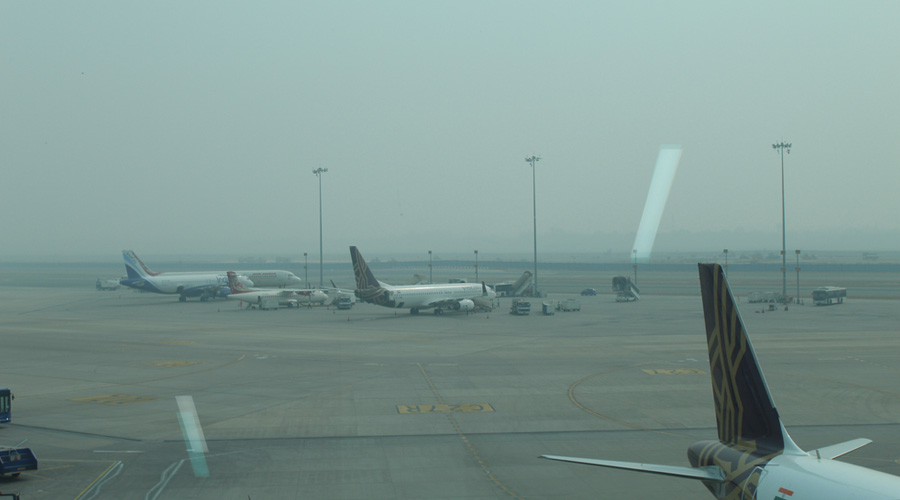Most pilots have been avoiding the holding point of taxiway A at the Kolkata airport since the wingtip of an IndiGo aircraft grazed an Air India Express plane on March 27 morning, said airport officials and pilots.
The Air India Express aircraft, bound for Chennai, was allegedly standing 46 metres behind where it was scheduled to — the holding point of taxiway A. The IndiGo flight to Darbhanga was moving along taxiway N4, when its wingtip grazed that of the stationary aircraft.
The tip of the Air India Express aircraft’s left wing broke and fell on the tarmac, while the tip of the IndiGo aircraft’s right wing developed a dent.
The incident happened near the northern end of the runway. The directorate general of civil aviation is conducting an inquiry and all the pilots of both planes have been derostered, said sources.
“Since the accident, most of the pilots are not requesting for holding on taxiway A,” said an airport official on Thursday.
Runway holding positions, marked on taxiways, are where aircraft must stop until the air traffic control issues a clearance to proceed to the runway for take-off.
“Before the incident, most pilots would request to use the holding point of taxiway A, particularly those operating narrow-bodied aircraft. Because, otherwise, the aircraft would have to go 300 metres more to the edge of the runway. So, holding on taxiway A meant less time for take-off and less fuel consumption,” said the airport official.
During summer, most flights take off from the northern end of the runway because of the wind pattern. In winter, the wind pattern changes and most aircraft take off from the southern end, said officials.
According to the airport official, around 340 flights take off from the Kolkata
airport every day.
“Now, they are preferring to move straight through taxiway N, all the way to taxiway P’s holding point at the northern edge of the runway,” he said.
Usually, aircraft would take taxiway N4, which is linked to taxiway A’s holding point.
The Telegraph spoke to several pilots who explained why they were apprehensive about using the holding point.
Usually, pilots request for a particular holding point and it is up to the air traffic control to grant or deny it.
“The March 27 incident has definitely impacted us. Now, many of us want to take the longer but conventional route that goes to taxiway P’s holding point,” said a pilot of an airline, who did not want to be named.
Derostering, which a pilot might face if there is a mishap, means suspension of some of the allowances, including the flying allowance. Also, if any pilot is found to be at fault, he or she has to undergo a refresher training and other procedures before getting back to flying. This affects carrier progression, the pilot said.
“There is now a technical issue, which pilots are wary about,” said another pilot.
He said taxiways N1, N2, N3 and N4 are newly built and they merge with taxiway N.
A major part of taxiway A is closed because of repairs.
“So, the ATC opts for unusual routes, which were earlier not generally used. These routes are now dynamic.... Hence, pilots want to play safe and use taxiway P, which is a single conventional route,” said the pilot.
“Using the holding point of taxiway A saves taxiing time and fuel and thus, helps maintain schedule. But now we are avoiding it,” he said.
One pilot said that in the last six days, he used the holding point of taxiway A only once. “Earlier, I would use it often,” he said.
